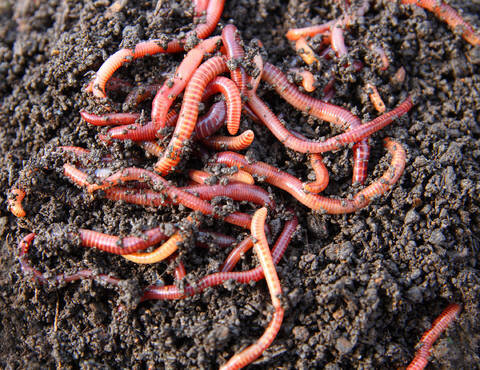Top red wigglers: For vermicomposting
Change Your Garden With Red Wigglers: Advice
By developing a basic worm container and comprehending the nutritional requirements of these remarkable animals, gardeners can substantially enhance soil quality and plant health and wellness. The process of converting organic waste right into rich, abundant castings is both uncomplicated and satisfying.

Benefits of Red Wigglers
Red wigglers, medically understood as Eisenia fetida, are usually hailed as nature's composting champs. These remarkable worms serve numerous key advantages that can significantly improve yard wellness and efficiency. They are effective decomposers, breaking down natural product such as cooking area scraps and yard waste into nutrient-rich vermicompost (red worms). This natural fertilizer improves the dirt, promoting healthy plant growth and enhancing dirt framework.

One more noteworthy benefit of red wigglers is their ability to reduce waste. By composting organic materials that would or else add to land fill waste, they play a crucial role in lasting horticulture practices. Including these worms into your horticulture routine can lead to increased returns, much healthier plants, and a much more vibrant yard environment, making them important allies for gardeners seeking to boost their eco-friendly impact.
Establishing a Worm Bin
Creating a worm container is a crucial action for anybody looking to harness the benefits of red wigglers in their horticulture efforts. An appropriate worm container can be made from different materials, consisting of plastic containers, wooden crates, or readily available worm containers. The first factor to consider is dimension; a bin that goes to the very least 2 feet broad, 3 feet long, and 1 foot deep is generally ideal for a tiny to medium number of worms.
It's crucial to develop a bed linen layer, making use of products such as shredded newspaper, cardboard, or coconut coir to provide a comfy environment for the worms. The bedding should be moist but not soaked, looking like a wet sponge - red worms.
Place the container in a location that maintains a constant temperature, preferably in between 55 ° F and 77 ° F. Avoid straight sunlight or severe cool, as these problems can harm the worms. When the container is set up, enable the bed linens to go for a couple of days before introducing the red wigglers, ensuring they have a successful setting in which to prosper.
Feeding Your Red Wigglers
As soon as the worm container is developed and the red wigglers are presented, appropriate feeding ends up being essential to webpage keeping a healthy and balanced worm population. Red wigglers thrive on a varied diet plan, mostly being composed of kitchen area scraps and organic products.
When introducing food, chop the scraps right into smaller items to help with quicker consumption. In addition, hide the food underneath a layer of bed linen material to prevent fruit flies and various other hassles. Screen the feeding frequency; a general regulation is to give food every 1-2 weeks, depending upon the number of worms and the quantity of food waste created.

Harvesting Worm Spreadings
Just how can you tell when it's time to gather worm spreadings from your container? The preparedness of worm spreadings is shown by a couple of key signs.
An additional indication is the reduction in worm activity; as the spreadings gather, worms have a tendency to migrate towards fresher food sources. If you see a decrease in worm motion and the presence of castings at the bottom of the bin, it's a clear signal that harvesting schedules.
To gather, gently dig the spreadings, making sure to minimize disruption to the worms. A popular method includes separating the spreadings making use of light; worms tend to delve away from the light, permitting you to gather the castings a lot more easily.
Collecting frequently, approximately every 3 to six months, makes certain a regular supply of this nutrient-rich amendment for your horticulture endeavors. Keep in mind, the quality of your castings straight impacts the health and wellness of your plants.
Utilizing Spreadings in Your Garden
(red wiggler compost bin)Utilizing worm spreadings in your garden can dramatically enhance dirt wellness and plant development - red worms. These nutrient-rich natural fertilizers offer important macro and micronutrients, improving the total fertility of your dirt. By integrating worm castings into your garden beds, you can promote useful microbial task, which assists in vitamins and mineral schedule and improves soil framework
To use worm spreadings properly, blend them into the top few inches of dirt prior to planting. You can create a nutrient-dense fluid fertilizer by soaking worm castings in water for a week, after that applying the resulting "worm tea" straight to your plants.
Worm spreadings also boost wetness retention within the dirt, minimizing the need for constant watering. Frequently incorporating worm spreadings into your horticulture routine can lead to durable plant development, increased yields, and a general much healthier yard environment.
Final Thought
Including red wigglers right into yard practices provides considerable benefits, including boosted dirt fertility and boosted plant wellness. By developing a worm bin, providing appropriate food, and consistently harvesting nutrient-rich spreadings, garden enthusiasts can cultivate a sustainable environment. Using worm castings and "worm tea" better contributes to moisture retention and nutrient accessibility in the dirt. Ultimately, the assimilation of red wigglers facilitates an effective and eco friendly technique to horticulture, promoting total ecological balance.